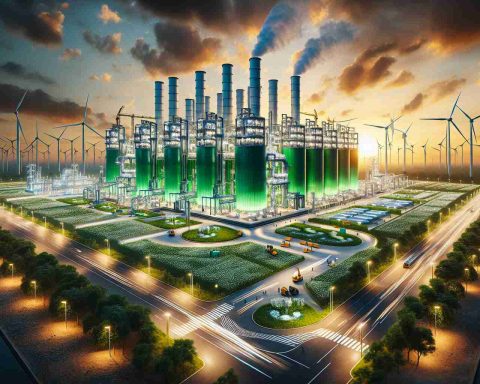The Indian government is making significant strides in the push towards sustainable energy by investing in green hydrogen projects aimed at revolutionizing the steel industry. As part of the National Green Hydrogen Mission, these innovative projects are expected to bring substantial environmental benefits and progress in clean energy application.
Supported by the Ministry of New and Renewable Energy, three pilot projects have been approved to explore the use of hydrogen in steel production. This marks an important move towards reducing carbon emissions in one of the country’s most crucial sectors. The government has allocated INR 347 crore for these projects, underscoring its commitment to clean energy solutions.
The projects include: a 50-ton-per-day facility by Matrix Gas and Renewables Ltd, developed in partnership with Gensol Engineering Ltd, Indian Institute of Technology Bhubaneswar, and Sweden’s Metsol AB; a 40-ton-per-day plant by Simplex Castings Ltd, together with BSBK, Ten Eight Investment, and IIT Bhilai; and a large-scale 3,200-ton-per-day plant by the Steel Authority of India Ltd in Ranchi. These efforts are expected to be operational within three years.
The outlined objectives for these projects focus on identifying advanced technologies and demonstrating the feasibility and safety of using green hydrogen in steelmaking processes. By doing so, the initiative aims to validate technical reliability, assess economic viability, and foster the shift towards low-carbon iron production. The government’s funding will support these pilot projects, playing a pivotal role in India’s transition to a more sustainable future.
The Impact of Green Hydrogen on Global Energy and Industry
Green hydrogen is making waves as a key player in the future of clean energy, promising to transform industries and significantly reduce carbon emissions across the globe. This innovative approach, particularly in sectors like steel production, holds the potential to alter the course of energy consumption for industries that have traditionally relied heavily on fossil fuels.
How Green Hydrogen Affects Industry and Communities
The introduction of green hydrogen in industries such as steelmaking not only reduces carbon footprints but also presents a path towards sustainable economic growth. The steel industry alone accounts for approximately 7-9% of global CO2 emissions, making it a critical area for clean energy transformation. By adopting green hydrogen, industries can potentially cut emissions drastically, aligning with global efforts to combat climate change.
Communities could also see substantial benefits. The creation of new green energy projects often leads to job creation, revitalizing local economies with opportunities in developing, operating, and maintaining these facilities. Moreover, as countries move away from fossil fuels, the gradual decrease in related environmental pollutants can significantly improve public health and quality of life in industrial regions.
Global Adoption and Technological Challenges
Several countries are already spearheading green hydrogen initiatives. The European Union, Japan, and Australia, for instance, have made substantial investments in infrastructure to harness this clean energy source. However, the technology faces several hurdles. The production of green hydrogen is still costly, primarily due to the expenses associated with renewable energy sources and electrolyzers used in the production process. Efforts are underway to improve the efficiency of these technologies and reduce costs, making green hydrogen more accessible on a larger scale.
Controversies and Economic Considerations
Despite its potential, the transition to green hydrogen is not without controversy. Critics point to the substantial initial investments required and the current inefficiencies compared to dirtier alternatives. There is also the debate on resource allocation towards green hydrogen projects when other renewable resources, like solar and wind, may offer more immediate benefits and proven results.
Economically, there is the concern of energy equity. Developing nations may struggle to invest in such advanced technology, potentially widening the gap between these nations and more developed countries already embracing clean energy solutions. The global community continues to discuss equitable strategies to ensure that all regions benefit from advancements in clean energy technologies.
In conclusion, while green hydrogen holds immense promise for reshaping our energy landscape and reducing industrial carbon emissions, it requires coordinated global efforts, technological advancements, and significant investments to overcome current challenges. As this energy source gains traction, ongoing research and policy development will be crucial to its successful integration into our world’s energy mix.
For more information, you can explore resources on green hydrogen on websites like the International Renewable Energy Agency (IRENA) and the International Energy Agency (IEA).















